![]()
![]()
![]()
![]()
| Discovering Our
Mezzojuso Ancestry & Heritage
|
||
| Articles by Giovanni Tavolacci |
![]()
![]()
![]()
![]()
![]() Music:
"Cantare é D'Amore"
- by Amadeo Minghi
Music:
"Cantare é D'Amore"
- by Amadeo Minghi![]()
![]()
![]()
![]()
![]()
![]()
![]()

![]()
![]()
![]()
Giovanni Tavolacci - - - E-mail: giotav@libero.it
| "I Soldati Garibaldini da Mezzojuso nel 1860" - |
| "Garibaldi's Soldiers from Mezzojuso in 1860"; |
| written on 12 April 1999. |
| "Campofelice di Fitalia e Mezzojuso" - |
| "Campofelice di Fitalia and Mezzojuso"; |
| written on 12 April 1999. |
![]()
![]()
![]()
![]()

![]()
![]()
![]()
![]()
![]()
![]()
![]()



| "I Soldati Garibaldini da Mezzojuso nel 1860" - |
| "Garibaldi's Soldiers from Mezzojuso in 1860"; |
| written on 12 April 1999. |

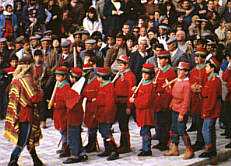

Mezzojusari: dressed colorfully, as the famous Risorgimento general Giuseppe Garibaldi (1807-1882) and his patriot Red-Shirt soldiers.
Nel rispondere al quesito in relazione ai mezzojusari che partirono con Garibaldi bisogna ricordare alcuni fatti: Proviamo a ricordare quali siano stati i fatti storici realmente avvenuti in quel 1860; il generale Giuseppe Garibaldi con i Mille, parte da Quarto il 5 maggio 1860 diretto a Marsala dove sbarcherà l'11 maggio, dopo la vittoriosa battaglia di Caltafimi del 15 maggio, volse il suo intento alla presa di Palermo impresa molto impegnativa alla cui riuscita dovevano concorrere altre forze di terra e di mare. I piani di guerra del generale concernevano un attacco alla città per la via di Monreale, dove però sostavano ottomila regi con cavalleria, e cannoni; pertanto si ritenne opportuno concentrare le forze a Gibilrossa.
|
In responding to the inquiry, in relation to the Mezzojusari that departed with Garibaldi, it is necessary to remember some facts: We try to recall what would be the historical facts, really happenning in that (year of) 1860; the general Giuseppe Garibaldi with the Thousand (Red Shirts / soldiers) left Quarto (on the Italian mainland) on 5 May 1860 directly to Marsala (on Sicily's west coast) where they disembarked on May 11; after the victorious battle at Caltafimi on May 15, he turned his intent to press on to Palermo, an enterprise very exacting, to which successful result they had to bring together other forces by land and by sea. The war plans of the general (Garibaldi) concerned an attack on the city (of Palermo) by way of Monreale, where, however, are stationed 8000 (Spanish Bourbon) troops of cavalry and cannons; so that he retains the opportunity (in order) to concentrate his forces at Gibilrossa.
|
|||||
Il 17 maggio La Masa che era agli ordini del Generale Garibaldi, si trovava a Roccamena e da lì inviò a molti comuni dell'isola un invito ad armarsi e ad unirsi ai prodi che combattevano le truppe borboniche nelle montagne di Palermo e nelle vicinanze. Il Giorno successivo passando per il Santuario di Tagliavia dove trovarono ristoro ed alloggio giunse a Mezzojuso, fece insorgere il paese e dopo avere disarmato le guardie e armati gli insorti si diresse verso Palermo portando con sé, come lui stesso dirà, non meno di 150 armati; c'erano con lui il Barone Di Marco che sarà il comandante della guerriglia, Spiridione Franco, Giuseppe Battaglia, Giuseppe Bellone, Rosolino Ribaudo, Ercole Figlia ed altri . A questa squadra si unirono quelle dei paesi vicini e queste squadre furono i primi ad impiantare il 21 maggio il campo di Gibilrossa.
|
On May 17, (commander) La Masa who was under orders by general Garibaldi, finds himself at Roccamena and from there he sends out to many comunes of the island (of Sicily) an invitation to arm themselves and to unite themselves to the heroes that are battling the Bourbon troops in the mountains of Palermo and in its vicinity. On the next day (May 18), passing through the Sanctuary of Tagliavia where they find refreshment and lodging unto Mezzojuso, he (La Masa) causes the town (of Mezzojuso) to rise up and, after having disarmed the (enemy) guards and armed men, the insurgents direct themselves toward Palermo, bringing with them, as he (La Masa) himself said, no less than 150 armed men (from Mezzojuso); with La Masa were the Barone Di Marco who will be the commander of the guerillas, Spiridione Franco, Giuseppe Battaglia, Giuseppe Bellone, Rosolino Ribaudo, Ercole Figlia and others. To this squardron were united those of nearby villages, and these squadrons were the first to establish the camp at Gibilrossa on May 21.
|
|||||
La Masa riuscì ad inquadrare questi uomini ad imporre la disciplina ed ad impiantare un presidio medico al capo del quale pose il dott. Giuseppe Bellone, il Generale Garibaldi fino all'ultimo era indeciso se piombare su Palermo o ritirare verso Castrogiovanni (l'attuale Enna) in attesa dell'arrivo di altri uomini, ma la notte del 26 maggio 1860 cominciò la marcia verso Palermo ed il 27 le truppe assaltarono la città.
|
La Masa managed to arrange these men to impose discipline and to establish a presiding medical doctor at the head of which was placed doctor Giuseppe Bellone; general Garibaldi until the end was indecisive whether to plunge into Palermo or to retreat toward Castrogiovanni (actually Enna) while waiting for the arrival of additional men; but on the night of 26 May 1860 he began the march toward Palermo and on May 27 the troops assaulted the city.
|
|||||
Diversi nostri compaesani accorsero dove il bisogno lo richiedeva; Don Felice Criscione accorse e combattè a Piazza Bologni, Francesco La Barbera combattè lungo la via dell'ospedale, Santo Romano combattè a Porta Reale e Porta Maqueda e M.ro Luigi Plescia a S.Antonino, Porta Montalto e Palazzo Reale, tutti combatterono fino all'espulsione dei Borbonici. In fatto di sangue sicuramente ci furono perdite tra i Mezzojusari che parteciparono alle azioni di guerra molto difficoltosa e la ricerca di documenti che ci consentano di risalire ai nomi, salvo un certo D'arrigo Agostino detto "austinazzu" che portava la bandiera del nostro comune che venne ucciso a Porta Termini , e di Matteo Raimondi che sostituì il malcapitato portando la bandiera fino alla vittoria, e Nicolò Ribaudo d'Ignazio che era di Cefalà Diana ma risiedeva a Mezzojuso.
|
Our many fellow villagers (from Mezzojuso) went to help where need required it; Don Felice Criscione went to assist and to battle at Piazza Bologni, Francesco La Barbera fought along the road of the hospital, Santo Romano fought at the Porta Reale and Porta Maqueda (city gates of Palermo), mastro Luigi Plescia at San Antonino and Porta Montalto and Palazzo Reale (Royal Palace); all fought until the expulsion of the Bourbons. In fact, much blood surely was lost amongst the Mezzojusari who participated in the actions of a most difficult war, and research of documents that were permitted to us in order to bring up the names -- saved (is) a certain Augostino D'Arrigo (called "Austinuzzu") who carried the flag of our comune (Mezzojuso) and who was killed at Potra Termini, and of Matteo Raimondi who sustained misfortune by carrying the flag finally to victory, and Nicoló Ribaudo (of Ignazio Ribaudo) who was from Cefalá Diana but resided in Mezzojuso.
|
|||||
Non pare però che uomini delle nostre squadre abbiano seguito Garibaldi oltre la città di Palermo, ad eccezione di Spiridione Franco di Salvatore che diventò Capitano dell'Armata Meridionale. Quanti furono i Mezzojusari che parteciparono all'impresa di Garibaldi? La Masa scrisse il 24 febbraio 1861 che partì da Mezzojuso con ne meno di 150 armati, ma a questi se ne aggiunsero altri ; non c'è un documento che lo attesti chiaramente né dati certi si possono ricavare da "XI Rendiconto di Cassa dell'Amministrazione" avuta nel Corpo d'Armata Cacciatori dell'Etna e Guerriglie Siciliane dal Maggiore Contabile Pasquale Mastricchi. Compiutasi l'impresa Garibaldina il 12 dicembre fu emanato un decreto con il quale ai partecipanti ai moti del 1860 veniva concessa una medaglia commemorativa, questa doveva essere richiesta dagli interessati facendone richiesta a un'apposita commissione.
|
It does not seem, however, that men from our (Mezzojuso) squadron might have followed Garibaldi further than the city of Palermo, with the exception of Spiridione Franco (son of Salvatore Franco) who became a captain of the Meridionale (Southern Italian) Army. How many were the Mezzojusari who participated in the undertaking of Garibaldi? La Masa wrote on 24 February 1861 that he departed from Mezzojuso with at least 150 armed men, but to these were joined others; there is not a document that attests clearly neither if certain dates can be drawn from "the Eleventh Report of the Case of the Administration", as was had in the Army Corps of Hunters from Etna and in the Sicilians Guerrilas from major bookkeeper Pasquale Mastricchi. In completing the Garibaldi campaign on December 12, there was issued a decree by which to the participants in the revolt of 1860 became conceded a commemorative medal; this must have been requested by those interested in making the request at a specially appointed commission.
|
|||||
Del nostro paese solo 42 presentarono la domanda e ottennero la medaglia, è un numero molto inferiore di quei 150 di cui parla La Masa, i loro nomi, come dice Ignazio Gattuso, non sono scritti in nessun libro, ma si è potuto esumare spolverando antiche carte, questi sono:
|
From our town (of Mezzojuso) only 42 presented the request / application and obtained the medal; this is a number much less than those 150 of which La Masa speaks; their names, as Ignazio Gattuso says, are not written in any book, but it can be assumed, dusting off antique papers, that they are these:
|
|||||
 |
 |
|||||
 |
 |
|||||
 |
 |
|||||
| Barna Antonino di Giuseppe, | Antonino Barna (son of Giuseppe Barna), | |||||
| Barna Giuseppe di Antonino, | Giuseppe Barna (son of Antonino Barna), | |||||
| Barna Nicolò di Antonino, | Nicolò Barna (son of Antonino Barna), | |||||
| Battaglia Giuseppe fu Giuseppe, | Giuseppe Battaglia (son of the deceased Giuseppe Battaglia), | |||||
| Bellone dott. Giuseppe, | doctor Giuseppe Bellone, | |||||
| Bonadonna Girolamo fu Pietro, | Girolamo Bonadonna (son of the deceased Pietro Bonadonna), | |||||
| Calivà dott. Antonino, | doctor Antonino Calivá, | |||||
| Celestino Luigi fu Nicolò, | Luigi Celestino (son of the deceased Nicolò Celestino), | |||||
| Criscione Demetrio, | Demitrio Criscione, | |||||
| Criscione Felice di don Gaetano, | Felice Criscione (son of don Gaetano Criscione), | |||||
| Criscione Giovan Battista di don Gaetano, | Giovan Battista Criscione (son of don Gaetano Criscione), | |||||
| Criscione Pietro di don Gaetano, | Pietro Criscione (son of don Gaetano Criscione), | |||||
| D'Amico Antonino fu Vincenzo, | Antonino D'Amico (son of the deceased Vincenzo D'Amico), | |||||
| De Lisi Salvatore di Andrea, | Salvatore De Lisi (son of Andrea De Lisi), | |||||
| Di Marco Barone Nicolò, | Barone (baron) Nicolò Di Marco, | |||||
| Di Carlo Sebastiano di Ciro, | Sebastiano Di Carlo (son of Ciro Di Carlo), | |||||
| Ferrara Vito fu Salvatore, | Vito Ferrara, (son of the deceased Salvatore Ferrara), | |||||
| Figlia Davide fu Salvatore, | Davide Figlia (son of the deceased Salvatore Figlia), | |||||
| Figlia Ercole fu Paolo, | Ercole Figlia (son of the deceased Paolo Figlia), | |||||
| Figlia Isidoro, | Isidoro Figlia, | |||||
| Franco Gaspare di Salvatore, | Gaspare Franco (son of Salvatore Franco), | |||||
| Franco Spiridione di Salvatore, | Spiridione Franco (son of Salvatore Franco), | |||||
| Gattuso don Biagio, | don Biaggio Gattuso, | |||||
| Gattuso Leonardo, | Leonardo Gattuso, | |||||
| Guarnacia Leonardo di Antonino, | Leonardo Guarnaccia (son of Antonino Guarnaccia), | |||||
| Guarnaccia don Vittoriano di Antonino, | don Vittoriano Guarnaccia (son of Antonino Guarnaccia), | |||||
| La Barbera Francesco fu Liborio, | Francesco La Barbera (son of the deceased Liborio La Barbera), | |||||
| Perniciaro Andrea, | Andrea Perniciaro, | |||||
| Re Pasquale di Nicolò, | Pasquale Re (son of Nicolò Re), | |||||
| Ribaudo Nicolò di Ignazio, | Nicoló Ribaudo (son of Ignazio Ribaudo), | |||||
| Ribaudo Pietro fu Andrea, | Pietro Ribaudo (son of the deceased Andrea Ribaudo), | |||||
| Ribaudo Rosolino, | Rosolino Ribaudo, | |||||
| Romano Carlo, | Carlo Romano, | |||||
| Romano Francesco fu Ignazio, | Francesco Romano (son of the deceased Ignazio Romano), | |||||
| Romano Francesco Paolo fu Gioacchino, | Francesco Paolo Romano (son of the deceased Gioacchino Romano), | |||||
| Romano Nicolò fu Ignazio, | Nicoló Romano (son of the deceased Ignazio Romano), | |||||
| Romano Santo fu Ignazio, | Santo Romano (son of the deceased Ignazio Romano), | |||||
| Schirò Nicolò, | Nicoló Schirò, | |||||
| Sdrao Michele, | Michele Sdrao, | |||||
| Splescia M.ro Luigi di Nicolò, | mastro Luigi Splescia (son of Nicolò Splescia), | |||||
| Tavolacci Giovanni, | Giovanni Tavolacci, | |||||
| Zuccarello Salvatore | Salvatore Zuccarello | |||||
 |
 |
|||||
 |
 |
|||||
 |
 |
|||||
Anche se corre l'obbligo far presente che tra questi ci sono gli uomini più in vista, intrusi che in qualche modo sono riusciti a corrompere la commissione avvalorandosi di meriti non loro sminuendo l'operato di tutti quelli che hanno effettivamente combattuto. Mancano invece tutti coloro che dopo avere affrontato disagi e pericoli, dopo avere rischiato la vita con la paga di quattro tarì al giorno che non poteva offrire miraggio di benessere, tornarono alle loro case e al lavoro dei campi senza nulla chiedere e senza nulla ricevere, con la fronte alta con la coscienza di avere adempiuto ad un'alta impresa, a questi figli della nostra terra, umili e grandi assertori di amor pario rimasti ignoti deve andare il nostro pensiero riconoscente.
|
Even if the obligation follows to bear in mind that among these are men more visible, intuiting that in some way they have not succeeded to corrupt their commission, strengthening by merits in themseles by diminishing the conduct of all those that they have effectively fought. Lacking, instead, all that which after having confronted discomforts and dangers, after having risked their lives for a payment of four cents per day that could not offer the mirage of benificence, they returned to their houses and to work in the fields without asking for anything and without receiving anything, with a highly-held face in the knowledge of having fulfilled a great enterprise -- to these sons of our land, humble and grand assertions of love seemingly having remained unknown, must go our recognizing thought.
|
|||||
Francesco Spallitta a cui è dedicata la Piazza di fronte alla chiesa dell'Annunziata non ha partecipato a nessun moto rivoluzionario ma è stato presidente della Provincia Regionale di Palermo.
|
Francesco Spallitta, to whom is dedicated the Piazza in front of the church of the Annunciation, did not participate in any revolutionary actions, but he did become president of the Regional Province of Palermo.
|
|||||
[Please Note: Francesco Spallitta did not fight as a soldier in General Giuseppe Garibaldi's Sicilian campaign, but he was nevertheless a fierce supporter of the Risorgimento and its great general. The celebrated and famous Giuseppe Garibaldi was actually hosted in Mezzojuso during 2-4 August 1862 in Francesco Spallitta's own home, located in front of the Roman-rite church of Most Holy Mary of the Annunciation in Mezzojuso. Francesco Spallitta's home now houses Mezzojuso's only commercial bank.]
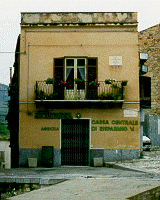
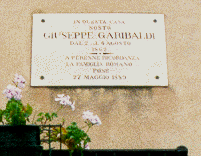


![]() General
Giuseppe Garibaldi in Mezzojuso, 2-4 August 1862.
General
Giuseppe Garibaldi in Mezzojuso, 2-4 August 1862.![]()

Left: House of Francesco Spallitta, an avid Risorgimento supporter, at whose home the famous General Garibaldi stayed; this building presently houses Mezzojuso's only bank. Center: Commemorative Plaque, noting that Giuseppe Garibaldi visited here in Mezzojuso, during 2-4 August 1862. Right: Photo of General Giuseppe Garibaldi (1807-1882).
![]()
![]()
![]()
![]()
| "Campofelice di Fitalia e Mezzojuso" - |
| "Campofelice di Fitalia and Mezzojuso"; |
| written on 12 April 1999. |
![]()
![]()
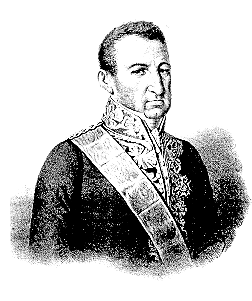
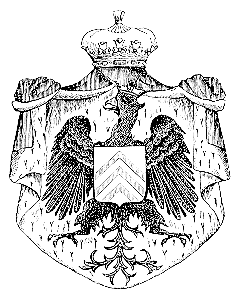
![]()
![]()
Fitalia, a Saracen Arab village founded around 1000 A.D., then became alternately an ecclesiastical and baronial fief for many centuries. Prince Girolamo Settimo Naselli (1785-1843) was the compassionate founder of Campofelice di Fitalia, by notarial act of 28 July 1811.
L'Arma della Famiglia Settimo: D'Argento, a tre caprioli di rosso; lo scudo in petto dell'acquila aragonese, sotto il mantello e la corona principesca. Arms of the Settimo Family: Of silver, with three caprioles of red; the shield on the breast of an Aragonese eagle, under a mantle and a princely crown.
Nel rispondere al quesito è cioè se il comune di Campofelice di Fitalia ha festeggiato il cinquantesimo anniversario della fondazione del comune, devo fare alcune precisazioni:
|
In responding to the inquiry, that is, if the comune of Campofelice di Fitalia is celebrating the fiftieth anniversary of (its) foundation as a comune, I must make some clarifications:
|
|||||
L'atto di nascita del borgo di Fitalia si può considerare quello del notaio Giuseppe Donato e Deluca di Palermo, in data 28 luglio 1811; protagonisti furono per primo il Principe di Fitalia e Marchese di Giarratana Don Girolamo Settimo, Vincenzo di Salvo della città di Mistretta, che era l'affittuario del feudo, l'ingegnere Giuseppe Patti che redasse i "Capitoli", ed i maestri Filippo Bonadonna e Antonino Granatello della Terra di Mezzojuso; Il borgo fu amministrato dal Principe, più che un'amministrazione civica fu un reggimento paternalistico, come dice Ignazio Gattuso, che il principe esplicò assiduamente senza lesinare mezzi.
|
The act of birth for the village of Fitalia can be considered that of the notary Giuseppe Donato e Deluca of Palermo, dated 28 July 1811; the protagonists were, firstly, the Prince of Fitalia and the Marquis of Giarratana - Don Girolamo Settimo, Vincenzo di Salvo (from the city of Mistretta) who was the hired manager of the fief, the engineer Giuseppe Patti who edited "the Charters", and teachers Fillipo Bonadonna and Antonino Granatello from the Land of Mezzojuso; the village was administered by the Prince, more than a civil administration it was a paternalistic regimen, as is said by Ignazio Gattuso, that the Prince expressed assiduously without stinginess.
|
|||||
Morto lui nel 1843, il suo successore non ebbe uguale sollecitudine verso la popolazione, fu così che dal 1846 la popolazione si amministrò da sé, era una situazione anomala che non poteva durare a lungo, cosicchè nel 1852 il Governo Borbonico attribuì coattivamente la "provvisoria e temporanea amministrazione di Campofelice" al Comune di Mezzojuso. A tutela degli interessi della frazione la Giunta Provinciale Amministrativa di Palermo, con deliberazione del 20 luglio 1889, sui venti consiglieri del comune ne assegno due alla borgata e successivamente questi furono portati a tre, i primi eletti di quell'anno furono Salvatore Mazzarese e Domenico Moscato.
|
Upon his (Prince Settimo's) death in 1843, his successor would not be of equal solicitude toward the population (of Fitalia); thus it was that after 1846 the population administered itself; it was an anomalous situation that could not last for long, so that in 1852 the Bourbon Governor (of Sicily) compulsorily assigned "the provisional and temporary administration of Campofelice" to the Comune of Mezzojuso. On the guardianship for the interests of the "fraction" (of Campofelice di Fitalia), the Administative Provincial Council of Palermo, with deliberation on 20 July 1889, upon the twenty councilmen of the Comune (of Mezzojuso) assigned two to the little village (from Fitalia) and subsequently these were brought to three; the first (two) elected in the year (1889) were Salvatore Mazzarese and Domenico Moscato (representing Campofelice di Fitalia).
|
|||||
La crescita della borgata sia essa di tipo economico che culturale portava l'aspirazione alla autonomia, è un fatto naturale che si verifica nei figli verso i propri genitori, è anelito di libertà, affermazione di personalità, desiderio di rinnovamento. Questa aspirazione sorse col sorgere del nuovo secolo, ma fu lunga e travagliata più per susseguirsi di eventi sfavorevoli, che per contrarietà di uomini.
|
The growth of the little village (of Fitalia), be it both of an economic and cultural type, brought the aspiration for autonomy; it was a natural fact that is verified in children toward their parents; it is sealed by liberty, the affirmation of personality, the desire for renovation. This aspiration arose with the rising of the new century (the early 1900's), but it was long and of travail, more for successive disfavorable events than for the contrariness of men.
|
|||||
La prima fu quando cessata la guerra mondiale del 1915 - 1918, i borghiggiani non parteciparono alla elezione dei loro rappresentanti nelle amministrative del 1919, nel 1922 stavano toccandola con mano poiché l'onorevole Antonino Pecoraro nella seduta del 27 giugno 1922, svolse alla Camera dei Deputati una sua proposta di legge per la costituzione in comune autonomo della frazione di Campofelice di Fitalia del Comune di Mezzojuso; la pratica non poteva essere avviata in modo migliore ma gli eventi politici si svolsero in modo da essere contrario alle autonomie e pertanto venne accantonato tale progetto.
|
The first was when the World War of 1915-1918 ceased, the villagers did not participate in the election of their representatives in the (Comunal) Administration of 1919; in 1922, they were touching it (autonomy) with their hands, because the honorable Antonino Pecoraro in the meeting on 27 June 1922 turned in to the Room of Deputies (legislators in Palermo) one of his law proposals for the constitution as an autonomous comune for the "fraction" of Campofelice di Fitalia, from the Comune of Mezzojuso; the affair could not be set in motion in a better way, but the political events turned out in such manner as to be contrary to autonomies and as such that project was tabled.
|
|||||
Finalmente l'assemblea Regionale Siciliana con la legge n°19 del 12 febbraio 1951 coronò l'antico voto degli abitanti di Campofelice eregendo a comune la frazione di Campofelice. Dopo avere fatto questa premessa che serve soprattutto a fare chiarezza, sulle date devo dire che anche quest'anno l'amministrazione di Campofelice di Fitalia ha festeggiato l'anniversario della costituzione a Comune di Campofelice di Fitalia e non il suo cinquantenario.
|
Finally, the Sicilian Regional assembly with law number 19 on 12 February 1951 crowned the ancient vote of the inhabitants of Campofelice, ruling as a Comune the "fraction" of Campofelice. After having made this premise that serves, above all, to make it clear, on the date I must say that even this year the Administration of Campofelice di Fitalia has celebrated the anniversary of its constitution for the Comune for Campofelice di Fitalia and not its fiftieth anniversary.
|
|||||
[Please note: The town center of Campofelice di Fitalia is located about six kilometers south from the town center of Mezzojuso, although these two comunes are territorially adjacent to each other. Both villages were founded as Saracen Arab settlements around the year 1000 A.D. Even though they largely have their own separate histories, interestingly enough due to political circumstances, Campofelice di Fitalia was actually a "frazione" or a 'part' of Mezzojuso for nearly 100 years, from latter 1852 until 12 February 1951.]
![]()

![]()
Campofelice di Fitalia: Panorama of the Comune and View of the Main Street
La Stemma di Campofelice di Fitalia: The Armorial Emblem of Campofelice di Fitalia
![]()
![]()
![]()
![]()
Vi abbraccio tutti,
Giovanni Tavolacci



Giovanni Tavolacci and his son Giuseppe
![]()
![]()
![]()
![]()
![]()
![]()


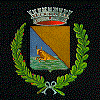


![]()
![]()
Discovering Our Mezzojuso Ancestry & Heritage
Blackburn, Mollye Bilao - - - "A Little of My Family History, and My Visit to Mezzojuso"; written on 20 April 1997. - - - "Cucidate: Fig Cookies for Christmas, A Mezzojuso Recipe"; written on 15 December 1997.
Briggs, Thomas - - - "My Family and I Visit Mezzojuso (during July, 1990)"; written shortly after the visit, and updated on 26 October 1997.
Cusimano, John - - - "My Trip to Mezzojuso (in the Province of Palermo)"; written on 7 November 1994.
De Angelo, Thomas - - - "My 'Discovery' of Mezzojuso"; written on 29 November 1999.
Di Stefano, Richard - - - "My Mezzojuso Immigrant Ancestors (Who Arrived in the U.S.A. in 1890)"; written on 1 November 1997.
Dunne, Laura Cutaia - - - "Genealogical Research on My Family from Campofelice di Fitalia"; written on 25 March 1999.
Frasca, Anthony - - - "Our Mezzojuso Reunion"; written on 10 May 1999.
Gallo, Frank - - - "Coincidence or Destiny? An Amazing Surprise during My Mezzojuso Research"; written on 29 April 1998.
Lagattuta, Salvatore Joseph - - - "My Family History from Mezzojuso"; written on 8 October 1999.
Lagattuta, Salvatore Joseph - - - "Remembrance of Visiting Mezzojuso (during the Summer of 1969)"; written on 26 April 1997.
Schiró, Anthony - - - "Mezzojuso Memories: Researching My Ancestry"; written on 26 October 1997.
Tavolacci, Giovanni - - - "I Soldati Garibaldini da Mezzojuso nel 1860" - "Garibaldi's Soldiers from Mezzojuso in 1860"; written on 12 April 1999. - - - "Campofelice di Fitalia e Mezzojuso" - "Campofelice di Fitalia and Mezzojuso"; written on 12 April 1999.
Mezzojusari, Descendants & Friends
|




![]()

![]()




![]()
![]()
![]()

![]() Home Page
Home Page![]() Main
Menu
Main
Menu![]() Discovering
Our Mezzojuso Ancestry
Discovering
Our Mezzojuso Ancestry![]()

![]()
![]()
![]()